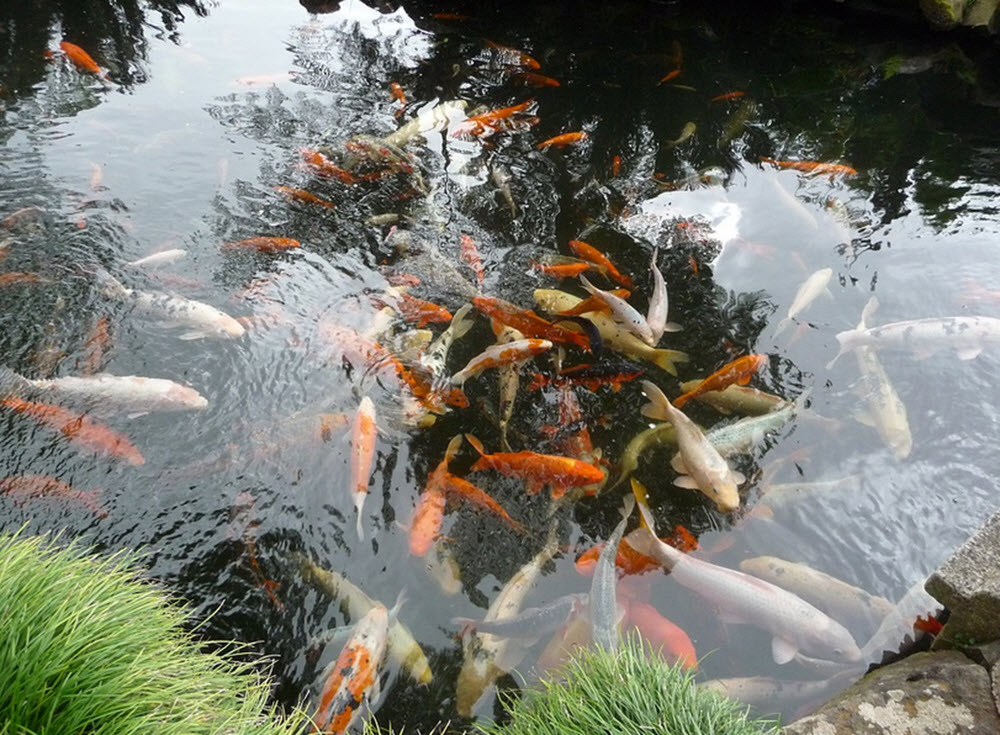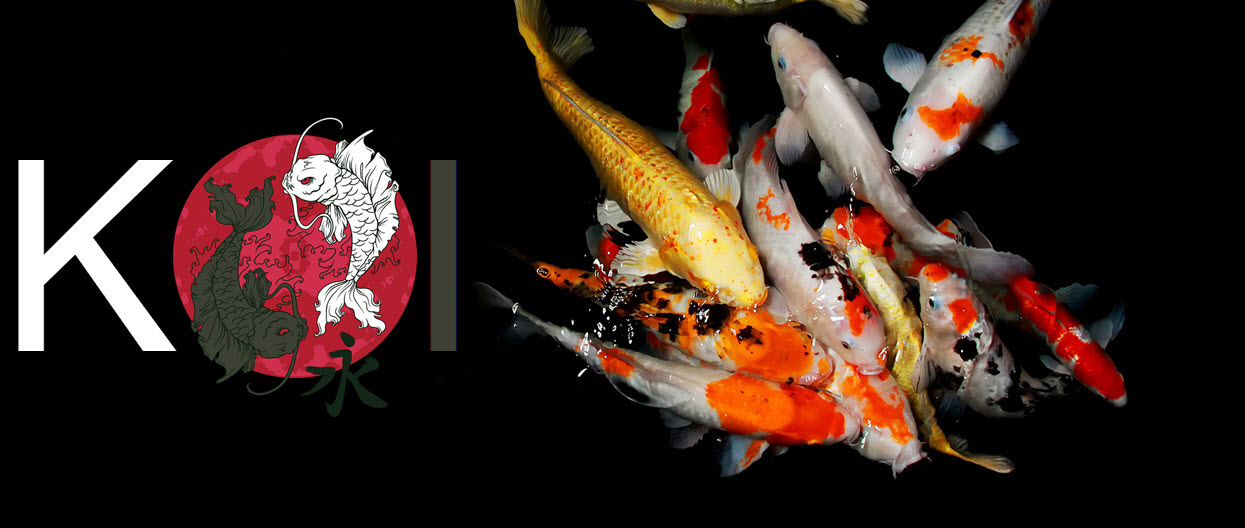With the right care, koi can live at least as long as a human. From Japan, there are even reports of properly cared for koi that lived for up toward 200 years. The longest-lived koi fish ever recorded was Hanako, who died in 1977 aged 226, after having had several owners throughout her long life.
The koi pond

Temperature considerations
An outdoor koi pond should ideally be at least one metre deep, because a more shallow pond is more prone to rapid changes in temperature. It can for instance get too hot during a warm and sunny summer day. If the pond is in a part of the world with cold winters, the water should be at least 1.5 metre deep. You might also need to install a fish-safe water heating system.
The koi has inherited quite a lot of sturdiness from its wild ancestor the Amur carp and can survive quite cold conditions, but we recommend you avoid keeping it in water colder than 15 degrees C. The optimal temperature range for koi is 15-25 degrees C; anything higher or lower should ideally be avoided.
Below 10 degrees C, the immune system of the koi becomes weak and the fish therefore becomes prone to illness. The metabolism of the fish will slow down, and feeding them in water this cold is not recommended. You might see them nibble on some algae in the pond now and then, but they wont be very active and their metabolism is greatly reduced.
Predators
The striking look of koi makes them easy to spot for a wide range of predators, such as herons, cats, raccoons, and badgers.
- If predatory wading birds exist in your area, make sure the pond includes an area that is too deep for them to stand in.
- Dense tree crowns, garden shade cloth or similar “roofs” can be used to block the view for predatory birds that hunt from the air.
- If there is a problem with raccoons or similar animals, you might need to string a net over the surface to keep them from reaching the koi.
Water quality
The water quality – including oxygen levels – will be impacted by various factors, including the dimensions of the pond, how densely inhabited the pond is, who lives in it, the feeding routines, and how much organic material (such as leaves) that enter from the surrounding environment.
A pump and filtration system can help keep the water quality up. Ensuring that the underwater pond environment is suitable for beneficial bacteria is also recommended, as they will do bio-filtration.
Partial water changes are also helpful.
Note: Koi fish love to sift through the sediment. If you want to keep the water very clear, a fairly strong filtration system may be required.
Feeding koi
Koi are omnivore fish and should be given both plant food and meaty food.
Commercial koi food is normally designed to float, to encourage the koi to swim to the surface where people can see them better. With that said, it is more natural for koi to find their food at the bottom, where they sift through the sediment. If you look at their mouths, you can see that they are typical bottom-feeders. Therefore, some companies sell koi food that sinks. Combos with some floating and some sinking food also exist.
Health
Koi can be trained to swim up to you and take food out of your hand. Training your koi to do this is a good idea, since it makes it easier for you to regularly inspect them for outer signs of poor health, such as ulcers, weight loss or external parasites.
Two of the main concerns for koi keepers are rhabdovirus carpio and koi herpes virus (KHV). No cure is known, but there is a vaccine called KV3 (produced by Kovax) that can reduce the risk of KHV.
Rhabdovirus carpio
Rhabdovirus carpio is the cause of spring viraemia in carps, an illness which can be deadly. An alternative name for this virus is carp sprivivirus, since it belongs to the genus Sprivivirus.
Symptoms: pale gills, build-up of fluid in the abdomen, external bleeding
Sometimes koi die without displaying any outward symptoms.
Spring viraenmia is listed as a notifiable disease under the World Organisation for Animal Health. It can infect a wide variety of carps, and experiments show that it is a risk even for some non-carp fishes, including guppy, zebrafish and northern pike.
Koi herpes virus
There is no cure for koi herpes virus, but a vaccine has been developed by a team headed by Prof. M Kotler of the Hebrew University of Jerusalem. The vaccine is injected in fish younger than one year, and is accentuated using ultraviolet light. In studies in Israel, the vaccine has showed a 90% success rate.
Reproduction
The natural spawning season for koi is spring and summer.
The male will follow the female around and nudge her.
The female koi releases a vast number of eggs and one or more males fertilizes them.
After the eggs have been released by the female, they will sink to the bottom and stay there. The eggs have a sticky outer shell.
Koi can produce thousands of offspring from a single spawning, but in pond conditions it is common for many of them to be eaten as eggs or fry.
